Pet fans, welcome! There’s nothing cuter than seeing our furry friends get excited about a new trip and wag their tails. But did you know that there is a quiet danger in our houses that puts our beloved dogs in great danger?
Today, we’re going to talk about carbon monoxide poisoning in dogs, a danger that most pet owners don’t know about but that can kill them. This blog post will teach you everything you need to know to keep your furry family members safe and happy, from looking into what causes it to finding out about possible risks and important ways to avoid them. So get a drink (and maybe some treats for Fido) and let’s start this journey that will open your eyes!
A Brief Look at Carbon Monoxide Poisoning in Dogs
Carbon monoxide is a colorless and harmless gas that is often called the “silent killer.” It is made when fuels like gasoline, wood, coal, and propane burn incompletely. This dangerous gas can unfortunately be very bad for the health of our animal friends, dogs.
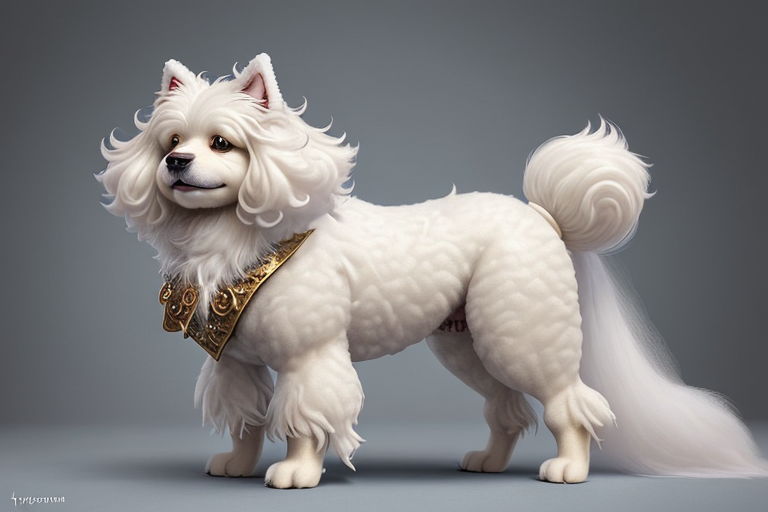
When carbon monoxide is ingested, it deprives the body of air. Cells and organs all over the body can be hurt by this lack of oxygen, which can cause a wide range of symptoms and even death. Because of their size and breathing systems, dogs are more likely to get sick from carbon monoxide than people.
Why dogs get carbon monoxide poisoning
Most of the time, dogs get carbon monoxide poisoning from breathing in exhaust fumes from cars or machines. This can happen if the dog stays in a small area with these sources for too long without enough air flow. Other reasons could be broken stoves or fireplaces in homes with dogs, charcoal grills or campfires used inside or in places with poor air flow, or even smoke from wildfires close by.
Dogs can also be exposed to high amounts of carbon monoxide if they are left alone in sheds with cars running or near gas-powered tools like generators. Besides that, if your home was damaged by a natural disaster like an earthquake or storm, you should check for gas line leaks that could expose you and your pets to carbon monoxide.
How to Tell If Your Dog Is Poisoned by Carbon Monoxide?
Carbon monoxide poisoning in dogs can show up in different ways based on how much and how long they were exposed. Lethargy, weakness, and trouble breathing are some of the less serious signs. But if your dog has been around high amounts of carbon monoxide for a long time, they may show more serious signs like seizures, losing awareness, going into a coma, or even dying.
Here are some more signs to look out for:
– Gums that are bright red
– Throwing up
– Feeling lost or confused
– Falling down or passing out
– A lack of coordination
– Feeling dizzy or stumbling
– Not being able to eat
(cyanosis) Blue spots around the mouth and tongue
– Trouble with breathing
How to Treat Carbon Monoxide Poisoning in Dogs?
If you think your dog has been exposed to carbon monoxide, you need to take them to the vet right away. Most likely, your vet will do a blood test to find out how much carbon monoxide is in your dog’s body. They may also do other tests, like an ECG or chest x-rays, to look for damage that might have been caused by not getting enough air.
Oxygen treatment is often used to treat carbon monoxide poisoning because it helps replace the carbon monoxide in the blood with oxygen. In the worst cases, your dog may need to stay in the hospital to be watched and get more care.
How to keep dogs from getting carbon monoxide poisoning?
The best way to keep your dog from getting carbon monoxide poisoning is to know where it could be coming from and take the right safety measures. Here are some important safety tips for your dog:
– Never leave your dog alone near a car that is going or any other gas-powered machine.
– Don’t use charcoal grills or campfires inside or in places that don’t have enough air flow.
– Have a professional check out your heater, stove, and any other gas-powered machines on a regular basis.
– Make sure that your home has carbon monoxide alarms that work, and try them often.
– During natural disasters, look for gas leaks and leave with your pets if you have to.
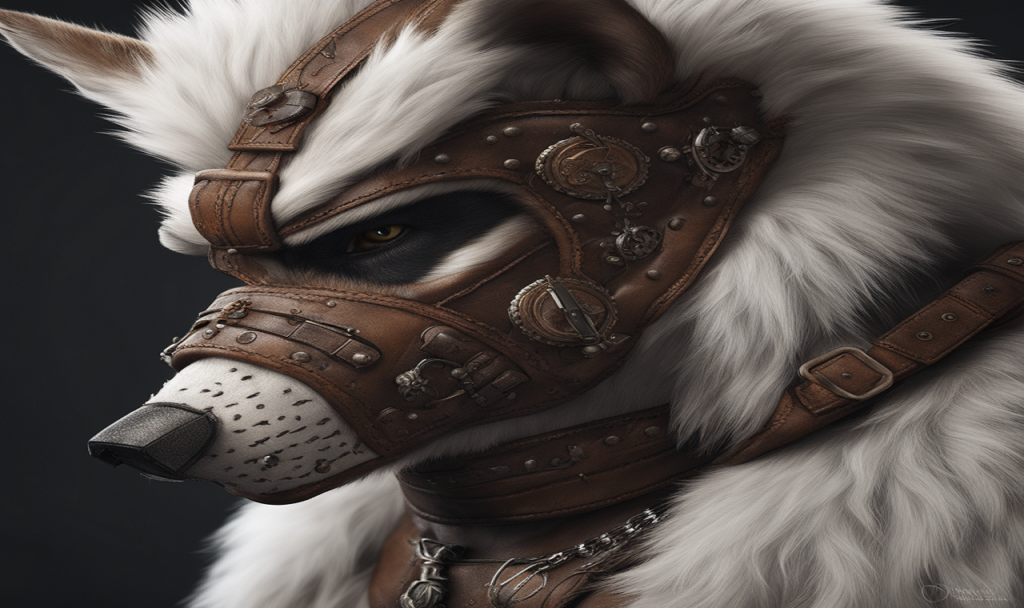
Conclusion
Carbon monoxide overdose in dogs is very dangerous and could even kill them. It’s very important for pet owners to know about possible sources of exposure and take the right steps to keep their furry friends safe. If you think your dog has been exposed to carbon monoxide, take them to the vet right away so they can be properly diagnosed and treated. Finding it early can greatly improve the chances of a good recovery.
Knowing how dangerous carbon monoxide is for pets
Carbon monoxide (CO) is a gas that is found in every home. It has no color or smell. It is made when sources like coal, gas, oil, and wood are burned. This includes stoves, fires, heating systems, and even cars. Carbon monoxide is called the “silent killer” because it can’t be found without special tools.
Carbon monoxide overdose can happen to people, but it can happen to our dogs even more easily. Because dogs’ metabolisms are faster than ours, carbon monoxide gets into their bloodstreams more quickly. To put it another way, they can get CO poisoning at lower amounts than people.
On top of that, dogs spend more time inside and near the ground, where carbon monoxide levels can be higher because of its density. Also, they might do things that put them at a higher risk for CO exposure, like taking naps near heaters or being curious around things that could be sources, like fires or cars.
Pets can get CO poisoning in the same way that people can, but because they are smaller, the consequences can happen faster and be worse. Pets that are exposed to high amounts of carbon monoxide can get sick, lose their balance, become confused, become tired, have seizures, go into a coma, or even die.
There have been many reports of pets dying from carbon monoxide poisoning in the past few years. The Pet Poison Helpline tells us that there were 148 cases in North America alone in 2015.
The best way for pet owners to keep their animals from getting carbon monoxide poisoning is to keep them from being exposed. To keep your pets safe, here are some ideas:
- Put in carbon monoxide detectors: Just like you would for yourself, make sure to put CO detectors in your home and check them often to make sure they are working right.
- Maintain and check your appliances on a regular basis. Have heating systems, stoves, and other fuel-burning appliances checked by a professional once a year to make sure they are working right and not leaking carbon monoxide.
- Keep pets away from things that could give off CO: For example, make sure your pets can’t get to places where fuel-burning devices are kept or installed. Don’t leave them alone near open flames or in a car that is running either.
- Learn how to tell if your pet has been poisoned by CO: If your pet is feeling tired, confused, having trouble breathing, or having seizures, this could be a sign of CO poisoning. If you think this is the case, you should take your pet to the emergency vet right away.
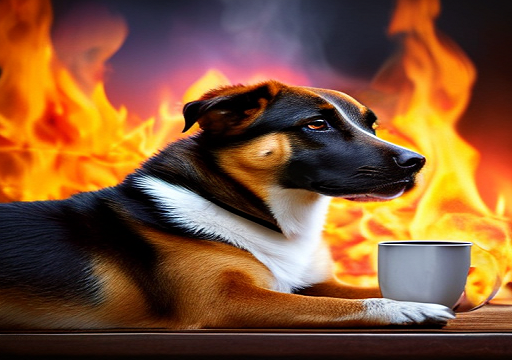
Pets are more likely to get carbon monoxide poisoning because they are smaller and may do things that bring them closer to sources of the gas. Pet owners must take steps to keep their animals from being exposed and know the signs of CO poisoning to keep their animals safe.
Figuring out what dogs do when they are poisoned by carbon monoxide
People and animals can both get carbon monoxide poisoning, which is very dangerous and could be deadly. It happens when a person breathes in colorless and silent carbon monoxide that has built up in a tight space. Dogs are more likely to get this kind of sickness because they spend so much time inside with their owners.
Figuring out the symptoms and signs of carbon monoxide poisoning in dogs is very important for finding the problem quickly and treating it. Your dog may have been introduced to carbon monoxide if any of these things happen:
- Difficulty breathing: One of the first signs of carbon monoxide poisoning is difficulty breathing. This could be due to the lack of oxygen in the air caused by high amounts of carbon monoxide.
- Lethargy: Dogs who have been exposed to high amounts of carbon monoxide may appear weak, tired, or lethargic. This is because carbon monoxide interferes with their ability to move oxygen throughout their body.
- Puking: If your dog quickly starts puking without any obvious reason, it could be a sign of carbon monoxide poisoning. The gas can upset the stomach walls, leading to sickness and vomiting.
- Loss of coordination: Carbon monoxide affects the nervous system, causing dogs to lose coordination and balance. They may stumble around or have trouble getting up.
- Red or pink gums: Carbon monoxide joins with hemoglobin in red blood cells, lowering its ability to carry oxygen throughout the body. This can cause the gums to look red or pink instead of their regular pink color.
- Seizures: In serious cases of carbon monoxide poisoning, dogs may experience seizures. This is a dangerous and possibly life-threatening condition that needs quick medical care.
- Fall: If a dog has been exposed to high amounts of carbon monoxide for an extended time, they may fall due to lack of air in their body.
It’s important to note that the signs and symptoms of carbon monoxide poisoning may change from dog to dog. Some dogs may show all of these signs, while others may only present one or two. It’s also possible for a dog to be affected by carbon dioxide without showing any signs at all.
If you think your dog has been exposed to carbon monoxide, seek quick medical care. The longer the contact, the more serious the signs and possible long-term effects on your dog’s health will be. Remember, prevention is better than cure – make sure your home is properly ventilated and free from any possible sources of carbon monoxide to keep your furry friend safe.
Changes in behavior and energy levels
Carbon monoxide pollution is a serious and possibly dangerous threat to both people and animals. It happens when the white, silent gas is swallowed and enters the bloodstream, stopping oxygen from reaching important organs and cells. Dogs are particularly sensitive to this type of poisoning due to their smaller size and faster metabolisms.
When exposed to carbon monoxide, dogs can experience a range of signs including changes in behavior and energy levels. These signs can change based on the amount of exposure, but it’s important for dog owners to be aware of them so that they can seek help quickly if their pet has been affected.
One of the first changes owners may notice in their dog is an increase or drop in energy levels. This is due to the fact that carbon monoxide interferes with the supply of oxygen throughout the body, making it difficult for cells to produce energy. As a result, dogs may become sluggish or extremely restless.

In addition to changes in energy levels, dogs may also show odd behavior such as confusion, dizziness, or even violence. Carbon monoxide affects the central nervous system, which can cause these unexpected behaviors in dogs. They may also seem clumsy or have trouble walking properly.
Other behavioral signs of carbon monoxide poisoning include excessive drooling or puking. This is because the gas can hurt nasal membranes and cause nausea in dogs. In serious cases, dogs may also fall or go into seizures.
It’s important for parents to pay attention not only to their dog’s behavior but also to any physical signs. These can include trouble breathing, pale gums or skin, and a high heart rate. Dogs may also have a bright red or cherry-colored look to their gums, which is a sign of carbon monoxide poisoning.
If you think your dog has been introduced to carbon monoxide, it’s important to seek medical care quickly. The doctor will be able to identify the overdose through blood tests and provide treatment, such as oxygen therapy, supporting care, and medicine to help remove the carbon monoxide from the body.
To avoid carbon monoxide poisoning in dogs, owners should make sure all gas machines are properly kept and released outside. Any signs of a gas leak should be handled quickly, and pets should be kept away from building areas where carbon monoxide may be present.
In summary, dogs subjected to carbon monoxide may show changes in behavior and energy levels due to the effects of this dangerous gas on their bodies. It’s important for owners to be aware of these signs so that they can quickly seek help for their pet if needed. By taking steps to avoid contact, pet owners can keep their furry friends safe from this potentially deadly threat.
Difficulty breathing or fast breathing
Difficulty breathing or fast breathing in dogs is one of the most common and dangerous signs of carbon monoxide poisoning. This sign can be caused by the intake of carbon monoxide gas, which can lead to serious lung discomfort if not quickly addressed.
When a dog inhales carbon monoxide gas, it enters their system and links with hemoglobin, stopping oxygen from reaching the body’s cells. This results in trouble breathing as they are unable to get enough air to support normal body processes. In some cases, this can also cause an increase in heart rate and panting as the body tries to adjust for the lack of air.
The intensity of this condition changes based on the amount of exposure to carbon monoxide. If a dog has been exposed to high amounts of this deadly gas for an extended time, they may experience rapid breathing or gasping for air. In more extreme cases, where contact has been lengthy or in tight areas with higher amounts of carbon monoxide, dogs may fight to breathe at all.
One important reason that adds to trouble breathing in dogs is their size. Smaller breeds tend to be more sensitive as their smaller lung capacity means they take in a higher quantity of toxins compared to their body weight. Additionally, older or senior dogs and those with pre-existing lung problems may experience greater trouble breathing when exposed to carbon monoxide.
It is important for pet owners to recognize these signs early on and seek quick medical care if their dog is having trouble breathing or showing other symptoms such as dizziness, confusion, or loss of consciousness. Prompt care can be life-saving and may involve oxygen therapy and other supporting steps to help your dog recover from carbon monoxide poisoning.
Vomiting or diarrhea
Vomiting and diarrhea are two common signs of carbon monoxide poisoning in dogs. Both of these symptoms can be indicative of other medical issues, but when combined with other signs like sleepiness and trouble breathing, they can serve as warning signs for possible carbon monoxide exposure.
Vomiting is the act of forcefully expelling stomach contents through the mouth. In the case of carbon monoxide poisoning, sickness may occur due to irritation in the dog’s stomach system caused by the gas. This can also lead to nausea and loss of appetite in affected dogs. However, it is important to remember that not all poisoned dogs will experience puking as a sign.
On the other hand, diarrhea is marked by loose, watery stools that can appear more frequently than normal. Due to its intensity and possible dehydration effects on dogs, diarrhea caused by carbon monoxide poisoning should be taken carefully and treated quickly.
Besides being difficult for dogs, continued puking and diarrhea can also lead to a loss of important minerals such as salt and potassium, which are vital for keeping proper body processes. Such imbalances can result in major health issues if not handled quickly.
One important aspect to keep in mind when judging whether your dog might have been exposed to carbon monoxide is regularity – both in terms of how frequent these symptoms appear and their length. If your dog quickly starts having unusual bouts of vomiting or diarrhea without any obvious reason, this could be a sign that something isn’t quite right. Moreover, if these symptoms continue for several days without change, it’s recommended to seek medical care as soon as possible.
Seizures or collapse
Seizures or breakdown are two of the most serious signs that can appear in dogs who have been exposed to carbon monoxide. These symptoms are often a sign of advanced carbon monoxide poisoning and require quick medical care.
When a dog is exposed to high amounts of carbon monoxide, their body’s ability to move oxygen to important areas becomes impaired. This lack of oxygen can cause the brain to become deprived, leading to seizures or death.

Seizures are spontaneous actions, such as tremors and muscle twitches, that occur due to abnormal electrical activity in the brain. They can range from minor twitches to full-body shaking and can last for several minutes. If your dog experiences a seizure, it is crucial to keep them away from any items or furniture that could harm them during the event.
On the other hand, collapse in dogs refers to quick loss of awareness and movement. Dogs may stop replying or moving quickly and may appear limp or motionless. In serious cases, they may even lose control over their stomach or bowels.
It is important to note that seizures or failure do not necessarily mean your dog has been exposed to high amounts of carbon monoxide. However, if these symptoms appear along with other warning signs such as trouble breathing, choking, vomiting, and sleepiness after being in an enclosed area with possible sources of carbon monoxide – it is critical that you seek emergency veterinarian care quickly.
During this time, it is important not only for your pet but also for you to leave the area and seek fresh air to avoid further exposure.
Common causes of carbon monoxide exposure for dogs
Carbon monoxide is a dangerous gas that is invisible, colorless, and highly harmful to both people and animals. It is created by the incomplete burning of fuels such as wood, gasoline, propane, and natural gas. When breathed, it can quickly enter the bloodstream and rob the body’s cells of oxygen, leading to major health issues or even death.
Dogs are particularly sensitive to carbon monoxide poisoning due to their smaller size and faster breathing rate compared to people. They can also be introduced through different means in their everyday surroundings. Here are some common reasons of carbon monoxide exposure for dogs:
- Household Appliances:
Many common home machines create carbon monoxide as a waste during operation. This includes boilers, water heaters, stoves, dryers, generators, and fires. If these products are not properly put or regularly kept, they can fail and leak carbon monoxide into the air.
- Vehicle Exhaust:
Carbon monoxide can also be found in high amounts in car exhaust fumes. Dogs may be exposed while sitting in an idle car or during a car ride with bad airflow.
- Blocked Vents:
Blocked vents in homes or cars can prevent proper airflow and cause a buildup of carbon monoxide indoors. Dogs may unknowingly inhale this harmful gas when they are trapped in these areas.
- Smoking:
Second-hand smoke from cigarettes includes high amounts of carbon monoxide which can put dogs at risk if they are regularly exposed to it.
- Carbon Monoxide Leaks:
Sometimes, carbon monoxide leaks can occur due to a broken or damaged fuel-burning device, leading to dangerous amounts of the gas in the home. This can be especially dangerous for dogs if they spend a lot of time indoors.
- Improperly Ventilated Garages:
If your dog spends time in a shed that is connected to your house, make sure it is properly aired. Cars running in the garage can release dangerous amounts of carbon monoxide into the air.
- Wildfires and Burning Material:
Burning material such as wood and crops, as well as wildfires, can release high amounts of carbon monoxide into the environment, offering a threat to dogs who take in the fumes.
- Faulty Heaters:
Space heaters and other types of heaters should be properly placed and kept to avoid problems that could lead to carbon monoxide leaks.
- Carbon Monoxide Poisoning from Neighboring Homes:
If you live in an apartment or townhouse with shared walls or air systems, there is a risk that carbon monoxide could enter your home from your neighbors’ rooms if they have broken appliances.
- Disaster Situations:
In emergency situations such as storms or earthquakes, gas lines and other fuel-burning machines may be damaged, leading to carbon monoxide leaks that could harm both people and animals.
Home Heating Units
Home heating systems are important for keeping our homes warm and cozy during the cooler months. However, they can also pose a significant risk to our pet friends if not properly kept and watched. In this part, we will cover the different types of home heating systems and how they can possibly lead to carbon monoxide poisoning in dogs.
Gas Furnaces:
Gas stoves are one of the most popular types of home heating systems, especially in areas with hard winters. They work by burning natural gas or propane to produce heat, which is then spread through pipes and vents. While efficient in keeping us warm, gas heaters can also be a source of carbon monoxide if not working properly.
Faulty airflow, dirty filters, or blocked exhaust lines can cause the release of carbon monoxide into your home instead of being released outside. Dogs who spend long times indoors and have access to these fumes can suffer from carbon monoxide poisoning.
Boilers:
Boilers use hot water or steam to spread heat throughout a house via radiators or floor heaters. Like gas heaters, boilers utilize fuel (usually natural gas) burning that creates carbon monoxide as a waste. If there is a problem with the ventilation system or blocking in the air pipe, carbon monoxide may escape into your home rather than being safely released outside.
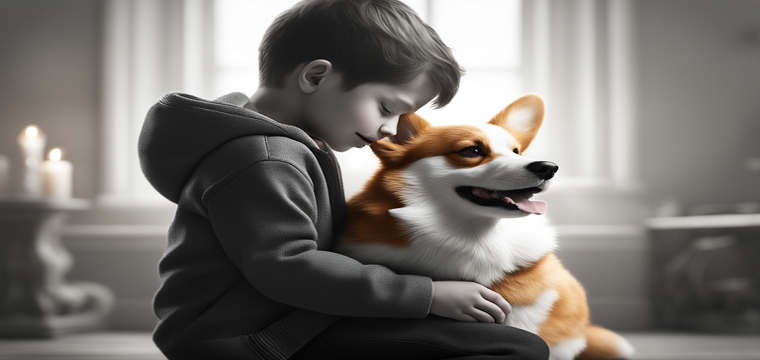
Wood-burning Stoves:
Wood-burning heaters have been used for ages to provide heat in homes. They work by burning wood logs inside a sealed room, and the heat is spread through a chimney or pipe. While this heating method may seem normal, it can also pose a danger to dogs.
Burning wood creates carbon monoxide as a result, so it is crucial to have proper airflow and regular upkeep checks to avoid the buildup of dangerous fumes. Additionally, if your dog has access to the stove, they may possibly get burned or knock over hot coals, leading to fires and other dangers.
Fireplaces:
Similar to wood-burning stoves, fireplaces also burn wood to produce heat. They require proper air and regular cleaning to avoid the release of carbon monoxide into your house. Fireplaces also pose other risks to dogs, such as burns from touch with hot surfaces and ingestion of harmful substances used in starting fires.
Safety Measures:
To keep your furry friend safe from possible carbon monoxide poisoning caused by home heating systems:
Install carbon monoxide monitors throughout your home: These devices can quickly tell you if there are high amounts of carbon monoxide in your home.
Schedule regular repair checks for your heating systems: A trained worker can review and clean your furnace or boilers’ ventilation systems, lowering the risk of carbon monoxide leaks.
Keep all vents and flues clear of debris: Make sure there are no blockages in the ventilation systems to ensure proper movement.
Supervise your dog near heating systems: Keep an eye on your dog when they are near wood-burning stoves, fires, or other heating systems to prevent accidents.
Never leave fires unattended: Always put out fires before leaving the room to avoid possible dangers.
If you think that your dog may be suffering from carbon monoxide poisoning, quickly take them outside to fresh air and seek veterinary treatment. Symptoms of carbon monoxide overdose in dogs include increased panting, trouble breathing, weakness, vomiting, and loss of awareness. Early discovery and treatment are important for a good recovery from carbon monoxide poisoning.
In conclusion, while home heating systems are important for keeping us warm during the colder months, they can also pose risks to our pet friends. By taking proper safety steps and regularly keeping these systems, we can ensure the safety and well-being of our beloved pets.
Car tailpipe smoke
Car tailpipe fumes are one of the most common sources of carbon monoxide (CO) poisoning in dogs. As our roads become increasingly crowded and more cars hit the streets, this danger has only grown more common. The poisonous gas is silent and colorless, making it difficult to discover until it’s too late.
Cars emit carbon monoxide as a result of their burning engines. This gas can build up quickly in tight areas, such as a moving car or workshop, and reach dangerous amounts within a matter of minutes. Dogs who are left in cars with the engine running or in badly aired garages are at risk for carbon monoxide poisoning.
One reason why car pollution fumes pose such a threat to dogs is that they have higher rates of breathing compared to people. Their smaller lungs mean they take in and process bigger amounts of air per body weight, making them even more subject to CO poisoning from lower ratios in the air.
Another factor that adds to this danger is dogs’ desire to study their surroundings with their nose. Carbon monoxide molecules join easily with hemoglobin in the blood, stopping oxygen from being supplied to important organs. Since dogs have a natural curiosity and may sniff around cars or places with high levels of exhaust fumes, they can easily take harmful levels without realizing it.
Symptoms of carbon monoxide overdose in dogs include weakness, sleepiness, trouble breathing, collapse, drooling/droopy lips, vomiting/diarrhea, and lack of balance. If you think your dog has been exposed to car pollution fumes, seek quick medical care.
Secondhand smoke
Secondhand smoke is another source of carbon monoxide exposure for dogs (and people). Just as it poses a health risk to people, secondhand smoke can also harm our animal friends. According to the American Veterinary Medical Association (AVMA), secondhand smoke includes over 250 dangerous chemicals that can damage a dog’s breathing system, heart, and other systems.
Dogs living in homes with smokers have a higher chance of getting lung cancer, nasal illnesses, and allergies. They may also experience problems with their eyes, skin, and hair from being exposed to smoke dust on objects around the home.
In addition to possibly causing carbon monoxide poisoning, breathing secondhand smoke can also hurt dogs’ eyes and cause inflammation in their lungs. Short-nosed breeds such as Bulldogs and Pugs are particularly sensitive since they already have breathing problems due to their anatomy.

Symptoms of secondhand smoke exposure in dogs include coughing/sneezing, wheeze, trouble breathing, eye/nose discharge, lethargy/decrease in activity level, and skin inflammation. If you or someone in your home smokes, it’s best to do so outdoors and away from your dog. You can also invest in air filters for your home and keep your dog’s living area well-ventilated.
Industrial / Chemical Smells
Industrial or toxic fumes from things like paint, cleaning products, gasoline, and herbicides can also pose a risk to dogs. Inhaling these harmful fumes can cause pain and damage to the respiratory system, leading to trouble breathing and other health issues.
Pesticides are particularly dangerous since they are meant to kill insects and other bugs, making them highly harmful to dogs if eaten or breathed. Even low-level contact to these items can have major effects for our pets.
Symptoms of industrial/chemical gas exposure in dogs include coughing/sneezing, trouble breathing/wheezing, drooling/droopy lips, vomiting/diarrhea, loss of appetite, weakness/lethargy, and skin itching. If you suspect your dog has been exposed to any type of industrial or chemical fumes, seek veterinary care immediately.
Prevention is key when it comes to protecting your dog from possibly dangerous fumes. Make sure all poisons and pesticides are kept safely out of reach of your dog, and keep them away from places where these products are being used. You can also switch to more natural, pet-friendly cleaning and pest control methods to reduce the risk of exposure.
In conclusion, car exhaust fumes, secondhand smoke, and industrial/chemical fumes are all common sources of harmful fumes that can hurt dogs. It’s important to be aware of these dangers and take steps to prevent your dog from being exposed. If you suspect your dog has been exposed to any type of toxic fumes, seek veterinary care immediately.
Wildfires and other
Wildfires and other natural disasters can also pose a significant risk of carbon monoxide poisoning for our canine companions. In fact, according to the National Fire Protection Association, pets are affected by carbon monoxide poisoning at a higher rate than humans during wildfires. This is due to several factors that make dogs more vulnerable to this deadly gas.
During a wildfire, large amounts of smoke and ash are released into the air. These particles can contain high levels of carbon monoxide, which can quickly reach toxic levels in confined areas such as homes or cars. Dogs have much smaller lungs than humans and breathe at a faster rate, making them more susceptible to inhaling these dangerous fumes. Their sensitive respiratory systems also make it harder for them to filter out harmful substances from the air.
In addition to wildfires, other natural disasters such as hurricanes and floods can also cause an increase in carbon monoxide levels in the environment. For example, during a hurricane or flood event, there may be power outages that lead people to use generators or alternative heating sources like propane stoves indoors. If not properly ventilated, these sources can produce high levels of carbon monoxide that can quickly accumulate in enclosed spaces.
It is important for pet owners living in areas prone to natural disasters to have an emergency plan in place that includes their furry family members. This should include having proper ventilation systems installed in your home if possible and knowing where your emergency shut-off valves are located for any gas-powered appliances.
In case of evacuation due to a natural disaster, it is crucial to have a designated safe place for your pets and to never leave them behind. If you must take your pet with you during an evacuation, make sure to have a carrier or leash on hand to keep them confined and safe in case of chaos or confusion. Be sure to also research pet-friendly shelters or hotels in the area where you can stay with your furry friend.
Symptoms of carbon monoxide poisoning in dogs may include:
– Feeling lost or confused
– Difficulty breathing
– Throwing up
– Lethargy
– Loss of coordination or collapse
– Seizures or coma
If you suspect your dog has been exposed to high levels of carbon monoxide, seek immediate veterinary care. Time is critical when it comes to treating carbon monoxide poisoning, so do not delay seeking medical attention.
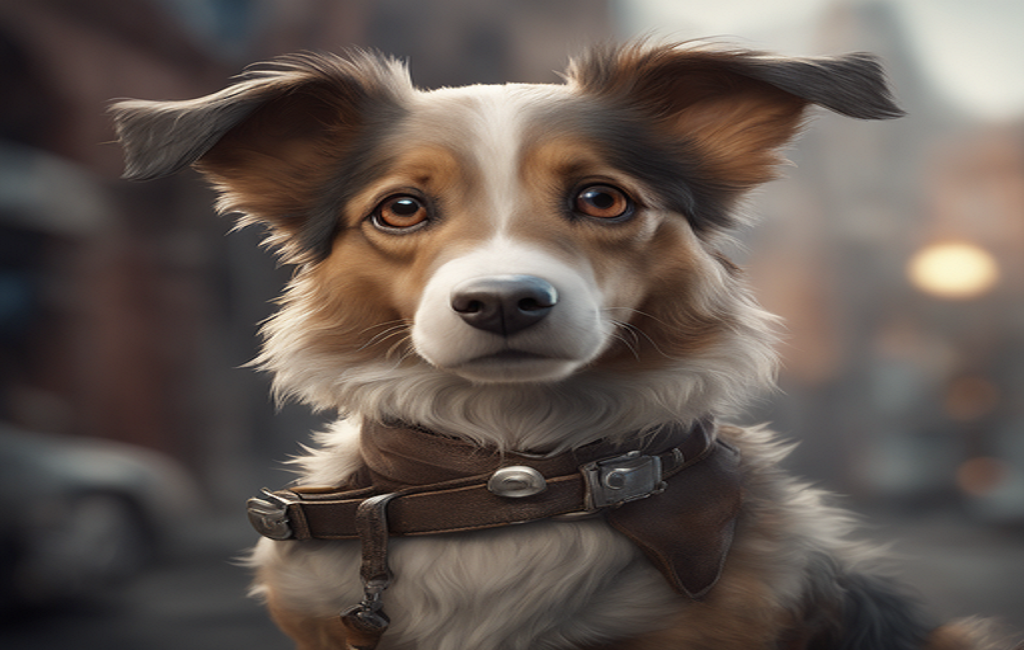
To help prevent carbon monoxide poisoning during times of increased risk such as wildfires and other natural disasters, be sure to have working carbon monoxide detectors installed in your home. Regularly check and replace batteries in these detectors as needed. Keep gas-powered appliances well-maintained and only use them in well-ventilated areas. And most importantly, always have a plan in place for keeping yourself and your pets safe during emergencies.
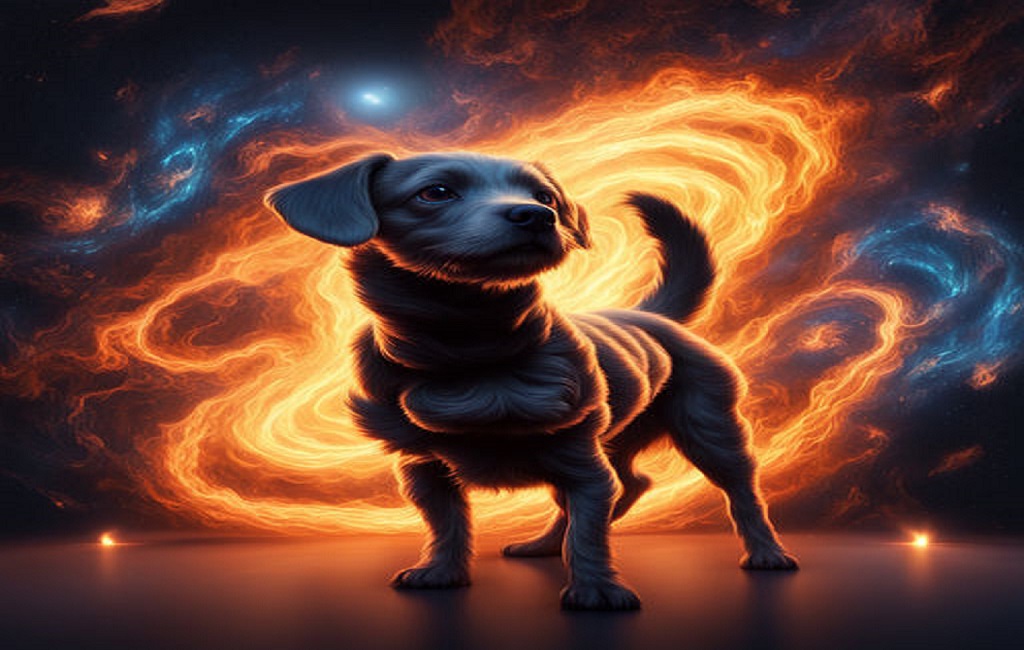
1 thought on “How to Know If you’re Dog Is Being Poisoned by Carbon Monoxide 2023”